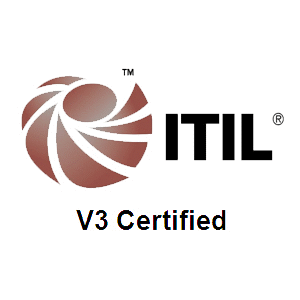The internet relies on IP (Internet Protocol) addresses to identify devices and route traffic. Two versions of IP exist today: IPv4 and IPv6. While IPv6 was introduced to overcome the limitations of IPv4, its adoption has been slower than expected. This article explores the differences between IPv4 and IPv6, their purposes, and the reasons behind the slow transition.

✅ What Is IPv4?
IPv4 (Internet Protocol version 4), introduced in 1981, is the foundation of modern internet communication. It uses a 32-bit address format, allowing for approximately 4.3 billion unique addresses, written in decimal format (e.g., 192.168.1.1).
Despite its age, IPv4 remains the most widely used protocol, supported by most internet-connected devices and services. Technologies like NAT (Network Address Translation) help extend its usability.
⚠️ IPv4 Limitations:
- Address Exhaustion: Limited number of addresses, many already depleted.
- NAT Complexity: Adds overhead and complicates peer-to-peer communication.
- Security Gaps: No default encryption or authentication.
- Scalability Issues: Requires manual configuration and maintenance.
Example: A home Wi-Fi router assigns IPv4 addresses like 192.168.1.2 to devices such as smartphones and smart TVs.
✅ What Is IPv6?
IPv6 (Internet Protocol version 6), developed in the late 1990s, addresses IPv4’s limitations. It uses a 128-bit address format, enabling 340 undecillion unique addresses, written in hexadecimal (e.g., 2001:0db8:85a3::8a2e:0370:7334).
IPv6 supports the growing number of internet-connected devices and includes built-in security and simplified configuration.
⚠️ IPv6 Challenges:
- Slow Adoption: Many ISPs and websites still prioritize IPv4.
- Compatibility Issues: Some legacy systems don’t support IPv6.
- Lack of Expertise: Engineers may lack IPv6 training.
- Dual-Stack Complexity: Running both protocols increases overhead.
Examples:
- Mobile Networks: Telecoms like Reliance Jio and T-Mobile use IPv6 to assign unique IPs to millions of devices.
- IoT Devices: Smart homes and industrial systems use IPv6 for unique device addressing.
- CDNs: Companies like Google and Akamai use IPv6 to improve content delivery.
- Government & Research: Agencies and universities adopt IPv6 for scalability and future-proofing.
🔍 Key Differences Between IPv4 and IPv6
| Feature | IPv4 | IPv6 |
| Address Length | 32-bit | 128-bit |
| Address Format | Decimal (192.168.1.1) | Hexadecimal (2001:db8::1) |
| Total Addresses | ~4.3 billion | ~340 undecillion |
| NAT Required | Yes | No |
| Security | Optional (IPSec) | Mandatory (IPSec) |
| Header Complexity | Simple | More complex but efficient |
| Broadcast Support | Yes | No (uses multicast instead) |
🎯 Why IPv6 Was Created
IPv6 was designed to solve the IPv4 address exhaustion problem. As the number of internet-connected devices grows, IPv4 cannot provide enough unique addresses. IPv6 offers a scalable, secure, and efficient solution.
❓ Why Is IPv6 Adoption Still Low?
Despite its benefits, IPv6 adoption faces several hurdles:
- Legacy Infrastructure: Upgrading IPv4-based systems is costly and time-consuming.
- Dual-Stack Complexity: Running both protocols increases operational burden.
- NAT Workarounds: NAT allows IPv4 to persist longer than expected.
- IPv4 Market: IPv4 addresses are traded, delaying migration.
- Low Consumer Awareness: End users don’t demand IPv6.
- Slow ISP & Content Provider Transition: Many still prioritize IPv4.
🌐 Challenges in an IPv6-Dominant Future
As IPv6 becomes more prevalent, system and network engineers will face new challenges:
🧱 Legacy System Incompatibility
Older systems may not support IPv6, requiring upgrades or replacements.
📘 Training Needs
Engineers must learn IPv6-specific concepts, including addressing and routing.
🧭 Network Redesign
IPv6 requires new subnetting and address planning strategies.
🔐 Security Policy Updates
IPv6 introduces new attack surfaces; firewall and IDS configurations must evolve.
🧰 Complex Troubleshooting
Longer addresses and new protocols demand advanced diagnostic tools.
🔄 Dual-Stack Management
Running both IPv4 and IPv6 increases configuration and monitoring complexity.
🧩 Vendor Support Gaps
Not all hardware and services fully support IPv6, requiring careful vetting.
📊 Address Management Tools
IPv6’s vast address space necessitates scalable IP management solutions.
🔮 Does IPv6 Have a Future?
Absolutely. As the number of internet-connected devices continues to grow exponentially, IPv6 is poised to play a critical role in the future of networking. Its vast address space offers the scalability required to support this expansion. Major tech companies have already integrated IPv6 into their infrastructure, and governments around the world are actively promoting its adoption. While IPv4 will remain in use for the foreseeable future, IPv6 is steadily becoming the new standard for internet communication.
🧠 Final Thoughts
The transition to IPv6 is not just inevitable—it’s essential. It promises enhanced scalability, stronger security, and more efficient routing. However, this shift also brings new challenges. System and network engineers must proactively upgrade their skills, tools, and infrastructure to accommodate the evolving landscape.
By planning ahead, organizations can ensure a smooth, secure, and future-ready migration to an IPv6-dominant internet.
🔗 Summary
While IPv4 and IPv6 serve the same fundamental purpose—identifying and routing internet traffic—they differ significantly in design and capacity. IPv6 was developed to overcome the limitations of IPv4, particularly address exhaustion. Although its adoption has been slower than anticipated, its relevance and necessity continue to grow.
Organizations should begin integrating IPv6 into their networks today to ensure long-term scalability, enhanced security, and compatibility with emerging technologies.
#IPv4, #IPv6, #InternetProtocol, #TechExplained, #NetworkingBasics, #IPv6Adoption, #CyberSecurity, #IoT, #IPv6VsIPv4, #TechEducation, #NetworkEngineering, #IPv6Tutorial, #IPv4Tutorial, #FutureOfInternet, #IPAddresses #mssqlfun

